Saturday, November 18th at 7PM
“In the tapestry of life, we’re all connected. Each one of us is a gift to those around us helping each other be who we are, weaving a perfect picture together.” ~Anita Moorjani
“There is a magic made by melody: A spell of rest, and quiet breath, and cool Heart, that sinks through fading colors deep To the subaqueous stillness of the sea, And floats forever in a moon-green pool, Held in the arms of rhythm and of sleep.” ~Amy Lowell
“It is the melody which is the charm of music, and it is that which is most difficult to produce. The invention of a fine melody is a work of genius.” ~Joseph Haydn
Color and music enjoy a kindred and interwoven relationship. The color spectrum contains a range of colors according to wavelength from shortest to the longest, and following an order of seven colors—red, orange, yellow, green, blue, indigo and violet. The audio spectrum range spans from 20 Hz to 20,000 Hz and can also be effectively broken down into seven different frequency bands, with each band having a different impact on the total sound. Sound is a wave form, and has four elements that define any and all of its sounds—frequency, amplitude, wave form, and duration, also known in musical terms as pitch, dynamic, timbre (tone color), and duration.
Both sight and sound greatly influence each other and our perception of the world around us. A recent psychology study from UCLA has found that people’s vision frequently influenced their hearing when they tried to identify a specific location of sounds and flashes of light, and that their hearing influenced vision when they were asked to count the sounds and flashes. The finding suggests that the use of an individual person’s senses are often combined in unique ways to gain understanding of exterior sight and sound sources.
For our next set of concerts, Piano by Nature would like to present you with a sensory banquet compiled of musical works brimming with musical color evocative of the Mediterranean and beyond. All of the works on this program focus on gorgeous singing melodies supported by lush, classical and sometimes jazz-influenced harmonies along with an abundant use of folk idioms. And to create a sight-sound experience, we will cover the floors of the Hand House with a plethora of Turkish rugs from multiple traditions and eras. Four Turkish composers will be featured—Say, Saygun, Erdener, and Tuğcular—all friends and colleagues of bassist Volkan Orhon—and leading voices in their seamless ability to marry Classical and folk compositional traditions. Amidst these woven colors of his homeland, Volkan will share this stunning music along with his intimate stories and personal connections to the composers. And we will also be welcoming the consummate Boston cellist Peter Zay as our special guest artist, who will bring stories of his own. These concerts promise to be a rare in-depth glimpse into the traditions and colors of Turkish culture, Italian masterworks, and much more. We so look forward to seeing you there.
CONCERT INFO
Be sure to put this very special return of our favorite bassist in your calendars! On Saturday, November 18th at 7PM and Sunday, November 19th at 3PM, Piano by Nature will present virtuoso double bassist Volkan Orhon with pianist Rose Chancler and cellist Peter Zay in a concert of astoundingly lush and beautiful music from the Mediterranean. Composers include Fazil Say, Ennio Morricone, and many more. Reservations can be made by emailing pianobynature@gmail.com or calling 518 962 8899. Tickets may be purchased at the door: $20 for adults, $5 for 15-and-under.
Our Program
Erdal Tuğcular, Colors of Anatolia
Adnan Saygun, Partita
Fazil Say, The Tree of Life Suite, Four Cities-Sivas
Turgay Erdener, Lorca Tango
Leonardo Presicci, Sentimentalbass
Ennio Morricone, Theme from Cinema Paradiso
Astor Piazzolla, Ave Maria, Kicho
George Frederic Handel Sonata in G Minor for two cellos, Opus 2, No. 8
Jean-Baptiste Barriere, Sonata for cello duet in G Major
Dennis Báthory-Kitsz, Nine Rabbits of Valladolid
The connections between music and weaving are unmistakable and profound, and we believe that having the textures and colors of beautiful Turkish woven rugs will greatly enhance the sight-sound connections of the concert experience. These rugs hail from a complex art form that has been handed down for centuries through tribes, families, and traditions, much like music. When looking at rugs, we recognize specific regions based on their distinctive colors and techniques of their process, and celebrate weaver-artists who excel at making works that go beyond and bring out emotions and thoughts from the viewer. Weaving metaphors abound, but one that resonates is “the unbroken thread.” It describes a connection to weavers who have gone before.
Hali, Kilim, Cicim Ushak, Hereke, and Sumak rugs have adorned the palaces of sultans and queens, inspired fairy tales and legends and cushioned the footsteps of generations. Turkish rugs, with their ruby reds and misted blues, their entwined botanical designs and rhythmic geometries, are as beloved today as they were in the 13th century, when the Turks of the Seljuk Empire began weaving these vibrant carpets in Anatolia. After thousands of years of wefts crossing warps across cultures and continents, it is hard to imagine that there are any undiscovered interlacements or techniques. But every era, culture, and weaver brings their own knowledge, sense of color, materials, and designs to weaving, thereby creating a very deep and rich repository for modern weavers to draw from.
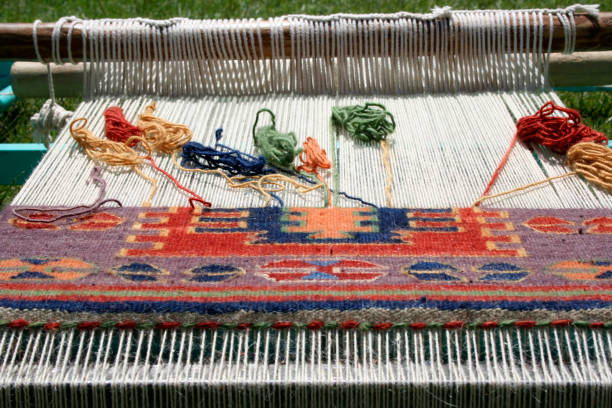
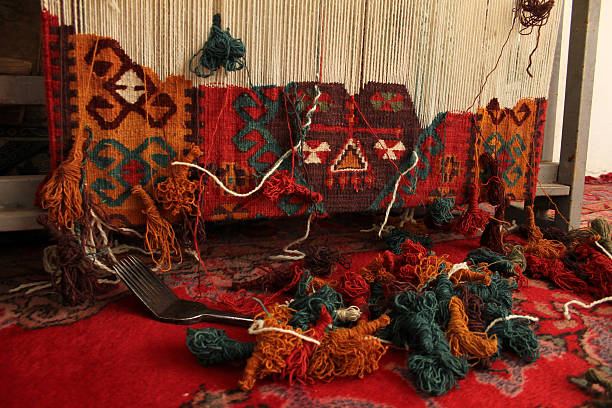
Featured Composers
Ahmet Adnan Saygun (Turkish pronunciation: [ahˈmet adˈnan sajˈɡun]; 7 September 1907 – 6 January 1991) was a Turkish composer, musicologist and writer on music. One of a group of composers known as the Turkish Five who pioneered western classical music in Turkey, his works show a mastery of Western musical practice, while also incorporating traditional Turkish folk songs and culture. When alluding to folk elements he tends to spotlight one note of the scale and weave a melody around it, based on a Turkish mode. His extensive output includes five symphonies, five operas, two piano concertos, concertos for violin, viola, and cello, and a wide range of chamber and choral works.
The Times called him “the grand old man of Turkish music, who was to his country what Jean Sibelius is to Finland, what Manuel de Falla is to Spain, and what Béla Bartók is to Hungary.” Saygun was growing up in Turkey when he witnessed radical changes in his country’s politics and culture as the reforms of Mustafa Kemal Atatürk had replaced the Ottoman Empire—which had ruled for nearly 600 years—with a new secular republic based on Western models and traditions. As Atatürk had created a new cultural identity for his people and newly founded nation, Saygun found his role in developing what Atatürk had begun. (Source)
Fazil Say is a prominent Turkish pianist and composer known for his contributions to both classical music and contemporary compositions. Former child prodigy Fazil Say has developed into one of the world’s leading composers, utilizing dance rhythms, jazz harmonies, and a wealth of melodic ideas traceable to the folk music of his Turkish homeland. He is celebrated for his innovative and boundary-pushing approach to classical and contemporary music, which has earned him recognition and a dedicated following in the world of music.
For more detailed information on his illustrious career as both performer and composer please visit his website.
Here is a little about his compositions included on the program:
The Tree of Life Suite, composed by the artist for cello and piano in 2021, contains melodies evocative of Say’s tribal roots and is beautifully compelling in his unique and inimitable style. It also has the feature of being Say’s 100th published work.
Sivas is a city in the central Turkey famous for its thermal springs believed to cure many illnesses. It is also the name of the first movement from his cello sonata Four Cities, and is a movement that works well transcribed for the bass.
Babam means “My Father” in Turkish. Fazil Say is known for infusing his compositions with personal and emotional themes, making his music relatable and evocative.
Umut means “hope” in Turkish and may be a reflection of hope or optimism, as suggested by its title, and it showcases Fazıl Say’s ability to evoke complex emotions through his music.
Turgay Erdener (Gümüşhane, 15 June 1957) is a prominent contemporary Turkish composer of classical music. He has taught composition at the Ankara State Conservatory since 1979 and earned a reputation for his innovative compositions and versatile musical style. He has a deep understanding of various musical genres, which is evident in his works that often blend classical and modern elements. (Source)
Erdal Tuğcular (b. 1961) is a Turkish composer who specializes in Traditional Turkish Folk music and instruments. He graduated from Gazi University, and was appointed as a Research Assistant in the field of Baglama and Folk Music in the same department. He served as a selection committee member and consultant in Folk Music competitions organized by the General Directorate of Youth and Sports and the In-School Physical Education and Scouting Department of the Ministry of National Education of the Republic of Turkey. He served as a commission member in the writing of the book “Turkish Folk Music Instrument Information” organized by the General Directorate of Fine Arts of the Ministry of Culture and Tourism.
He carried out various studies on the polyphonic use and training of baglama, a long-necked Turkish lute. In addition to exercises, studies and trials for solo baglama, he also wrote various works written for baglama duo, baglama quartet, folk music orchestras, choir, string orchestra, symphonic orchestra and some chamber music ensembles, in the form of albums. He has previously published books titled “Polyphonic Folk Song Repertoire for Baglama and Folk Music Ensembles,” “The Color of Folk Songs: 11 Pieces for Piano,” and “Solfeggio with Folk Melodies” (Ali Sevgi, Erdal Tuğcular) Folk Songs with Piano Accompaniment for Voice.” His symphonic works include “Reflections from Seven,” played by the Presidential Symphony Orchestra in 2000, and “Symphonic Poem.” In addition to his works being performed in many concerts at home and abroad, he has appeared on various CDs and cassettes. (Source)
The Performing Artists
VOLKAN ORHON, BASSIST
Acclaimed for his musicality and virtuosity, Volkan Orhon has established himself as one of the top double bassists in the world today. He was a finalist and prizewinner in the Concert Artists Guild Solo Competition in New York City, and was the co-first place winner of the International Society of Bassists Solo Competition. Additionally, he distinguished himself as the first double bass player ever to win the grand prize overall and first prize for double bass at the American String Teacher’s Association Solo Competition.
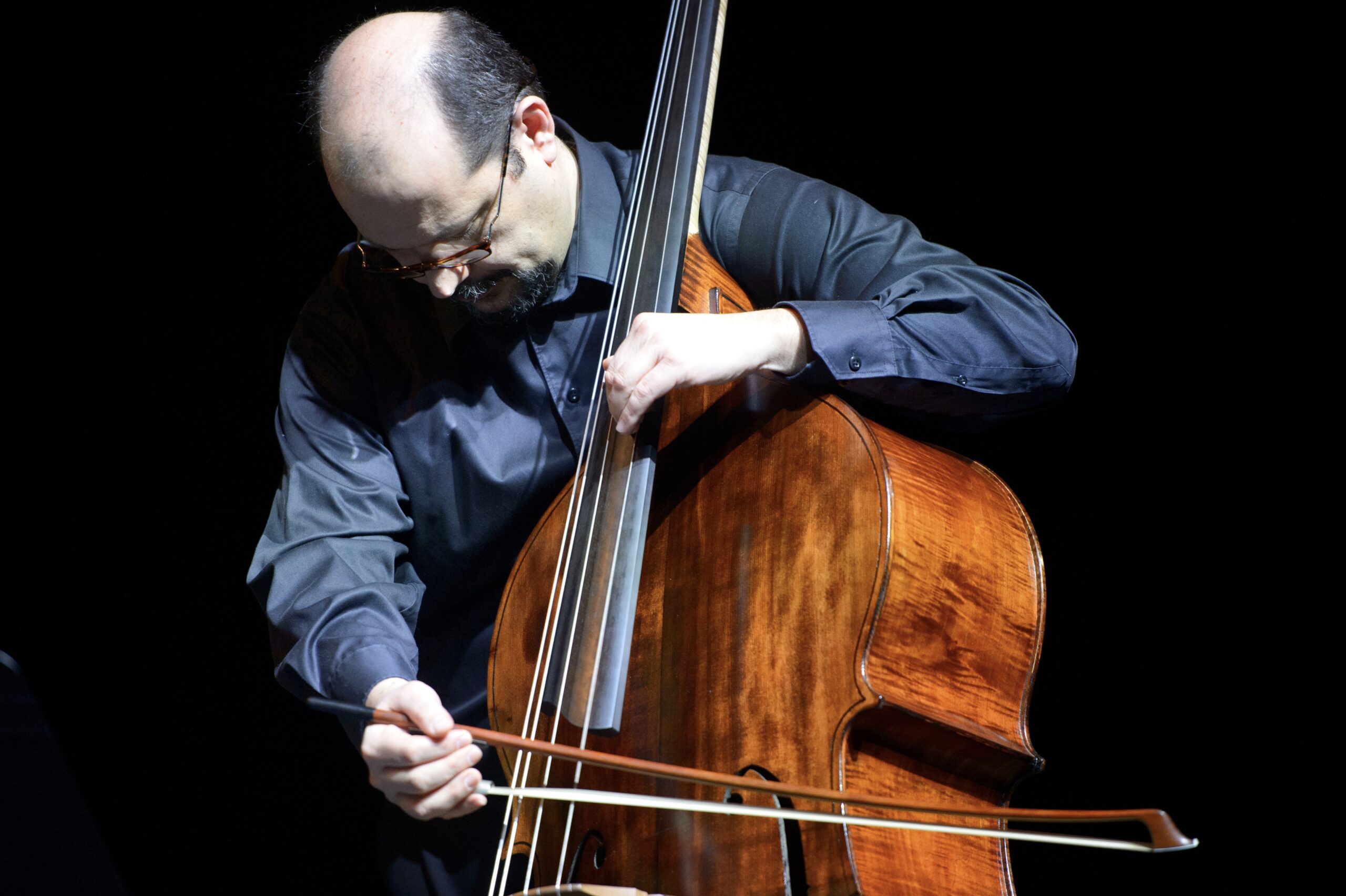 Mr. Orhon has performed with internationally recognized musicians including Gary Karr, Fazil Say, the Emerson String Quartet, and Tokyo String Quartet, and has performed recitals and as a soloist with orchestras around the world. He was one of the performers for the international consortium of Pulitzer Winner composer John Harbison’s Concerto for Bass Viol and Orchestra. He has been invited to perform at the European double bass conferences in Paris, Berlin, Prague, Lucca, and Wroclaw. He has given solo recitals and concerts at institutions including the Bursa State Conservatory and Eskisehir Anatolian University (Turkey), Paris Conservatory, Norwegian Academy of Music, Arizona State University, University of Michigan, Butler University, Northwestern University and North Carolina School of the Arts.
Mr. Orhon has performed with internationally recognized musicians including Gary Karr, Fazil Say, the Emerson String Quartet, and Tokyo String Quartet, and has performed recitals and as a soloist with orchestras around the world. He was one of the performers for the international consortium of Pulitzer Winner composer John Harbison’s Concerto for Bass Viol and Orchestra. He has been invited to perform at the European double bass conferences in Paris, Berlin, Prague, Lucca, and Wroclaw. He has given solo recitals and concerts at institutions including the Bursa State Conservatory and Eskisehir Anatolian University (Turkey), Paris Conservatory, Norwegian Academy of Music, Arizona State University, University of Michigan, Butler University, Northwestern University and North Carolina School of the Arts.
Mr. Orhon has recorded CDs under the Albany, Centaur, and Crystal Records labels. Most recently he recorded the double bass concerto Bailey’s Beads with the Royal Philharmonic Orchestra in London, a work written for him by composer David Gompper.
As a pedagogue, Mr. Orhon has been an invited clinician to workshops across the United States and abroad, including European double bass conferences Bass2018 LUCCA, Bass Bass2010 Berlin, Bass2008 Paris, Ouro Branco Festival in Brazil, Suzuki Association of the Americas, American String Teachers Association and the International Society of Bassists. He has served on the faculties of the University of Connecticut, Central Connecticut State University, University of Massachusetts Amherst, The Hartt School Community Division of the University of Hartford, Kinhaven Music School (VT) and Summer Strings Music Festival in Pocatello, Idaho.
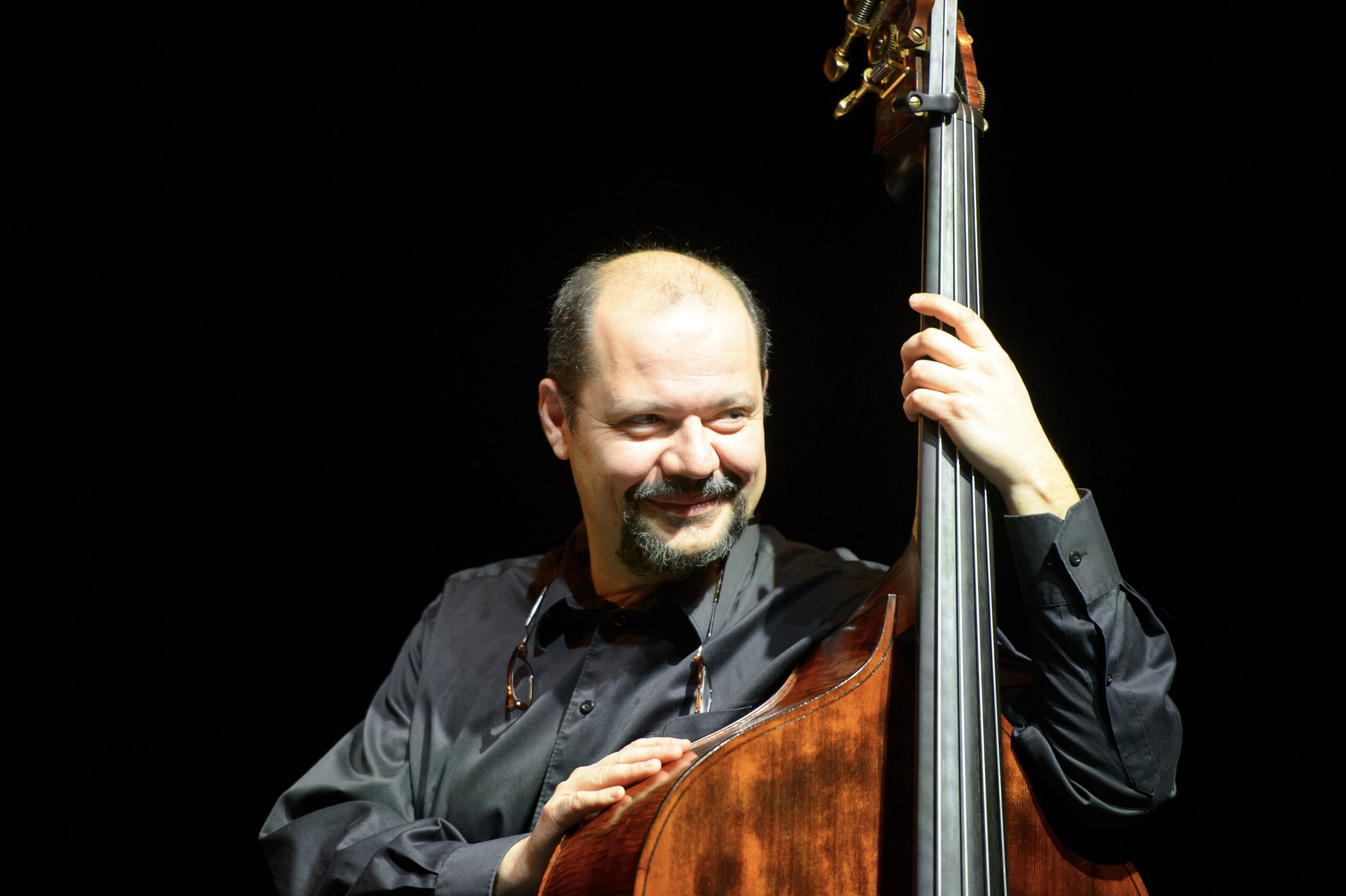 Born and raised in Turkey, Mr. Orhon began playing the double bass at the age of 12, and spent much of his youth touring Europe with the Mediterranean Youth Soloists. After receiving his bachelor’s degree from the Ankara State Conservatory under the tutelage of Tahir Sumer, he became a member of the Ankara Presidential Symphony Orchestra. In 1991, Mr. Orhon came to the United States to continue his studies with Gary Karr at The Hartt School of Music, where he earned an Artist Diploma and Master of Music.
Born and raised in Turkey, Mr. Orhon began playing the double bass at the age of 12, and spent much of his youth touring Europe with the Mediterranean Youth Soloists. After receiving his bachelor’s degree from the Ankara State Conservatory under the tutelage of Tahir Sumer, he became a member of the Ankara Presidential Symphony Orchestra. In 1991, Mr. Orhon came to the United States to continue his studies with Gary Karr at The Hartt School of Music, where he earned an Artist Diploma and Master of Music.
Mr. Orhon is currently professor of double bass at the University of Iowa. He is a D’Addario Diamond Performing Artist. www.volkanbass.com
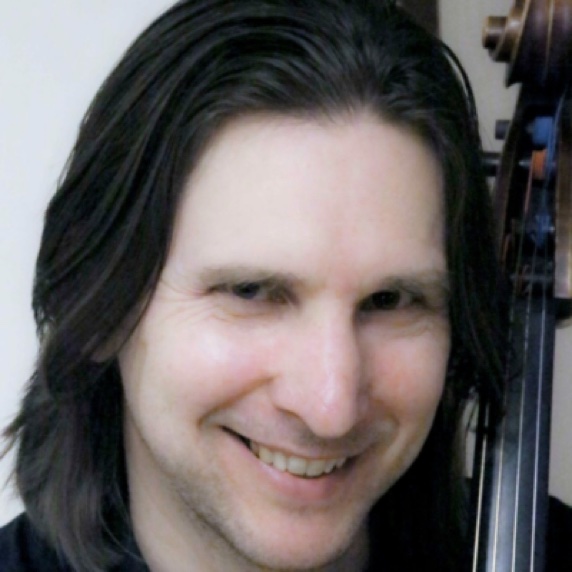
PETER ZAY, CELLIST
A highly sought-after musician, Peter Zay is equally at home in orchestras, chamber ensembles, bands, and as a soloist. He fuses his classical training with many multi-genre styles in his performances, compositions, and arrangements. In addition to being the newest cellist of the New World Trio, Peter performs on cello and guitar with the genre bending duo Larksgrove. He is a founding member of the Mosaic String Trio and he often appears as a guest artist on the Sunday Serenades and the Trinity College Concert Series in Hartford.
A cellist with the Hartford Symphony Orchestra for over twenty years, Peter recently sat as acting Principal for performances of Ginastera’s Orchestral Variations, of which his solos were called “spectacular” by the Hartford Courant. Peter is also the Principal Cellist of the Plymouth Philharmonic Orchestra and a member of the New Bedford Symphony Orchestra.
Peter holds degrees from the Hartt School and the Manhattan School of Music and has attended the Yellow Barn, Taos, and Aspen Music Festivals.
ROSE CHANCLER, PIANIST
Rose Chancler is a frequent performer as soloist, collaborative artist, and teacher. She has played hundreds of concerts across America, including performances in over thirty states with a variety of artists and instruments, including cellist Jeffrey Solow, saxophonist; Harvey Pittel, flutist; Carol Wincenc; Broadway’s George Hearn; and many more. Currently, Rose is focused on performing chamber music and presenting concerts in New York State’s Adirondack Park as a founding member and Artistic Director of the dynamic series Piano by Nature in Elizabethtown, NY.
Rose has enjoyed a long collaborative association with virtuoso double bassist Volkan Orhon, with performances including BassEurope recitals in Prague, Czech Republic, the Friends of Chamber music series in Tucson, Concert Artists Guild in Pittsburgh, and the ASTA convention spotlight concert in Louisville, KY. Her collaboration with Orhon has also resulted in two highly-acclaimed CD releases of violin and cello masterworks on the Centaur label.
Rose also enjoys performing as a member of Metamusic with SUNY Plattsburgh faculty members Dan Gordon and Marilyn Reynolds, focusing on regional concerts which present well-written and less-heard original music for saxophone, violin, and piano. Rose has held teaching positions at the University of Alaska, Fairbanks, and the University of Iowa School of Music. She has been a collaborative pianist/coach at the Chautauqua Institution and the acclaimed Meadowmount School of Music. She has served on the faculty of SUNY Plattsburgh, and now maintains a private studio in Westport, NY. Rose holds a BM degree from the University of Texas at Austin, and a DMA from the Eastman School in Rochester, NY.
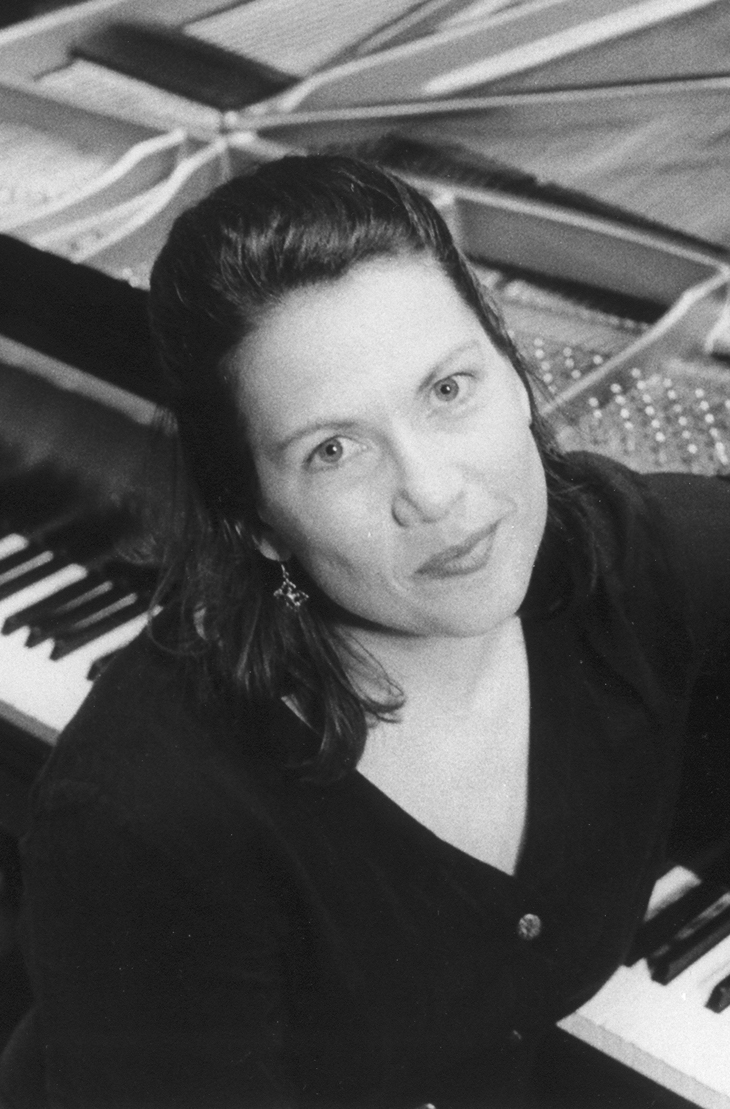
Please consider sending a donation to Piano by Nature to help us continue to support our artists and deliver exceptional live music to the North Country and beyond. You can mail a check to Piano by Nature, 32 Champlain Ave., Westport, NY 12993. Or donate online through the Donate button below (using your Paypal account or credit card). If you have questions or ideas, feel free to call Rose at 518.962.8899. I’d love to hear from you.
Piano By Nature’s programs are made possible, in part, by the Essex County Arts Council’s Cultural Assistance Program Grant with funding provided by Essex County. Piano By Nature’s programs are also made possible with funds from the Statewide Community Regrant program, a regrant program of the New York State Council on the Arts with the support of the Office of the Governor and the New York State Legislature and administered by the Adirondack Lakes Center for the Arts. “Singing Noise Colors” is also supported by the Audience Building Project and the Artists in Communities Fund, both programs of the Lake Placid Center for the Arts and the New York State Council on the Arts with support from the Governor and New York State Legislature.
